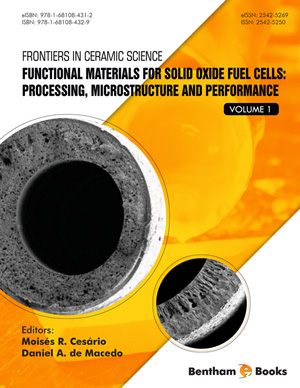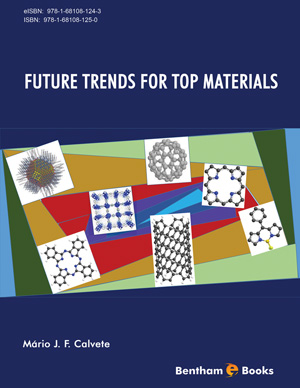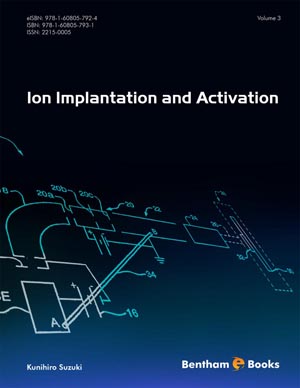Preface
Page: ii-ii (1)
Author: Jerzy J. Sobczak and Ludmil B. Drenchev
DOI: 10.2174/9781608050383109010100ii
CHAPTER I: MAIN PRODUCTION TECHNOLOGIES
Page: 1-24 (24)
Author: Ludmil B. Drenchev and Jerzy Sobczak
DOI: 10.2174/978160805038310901010001
PDF Price: $15
Abstract
This chapter deals with the concept of graded material and main technologies for their production. The technologies for metallic graded materials are divided into two general groups. A sequence of eighth basic production methods is discussed in more details.
CHAPTER II: SPECIFIC PROPERTIES CHARACTERIZATION AND MATHEMATICAL MODELING
Page: 25-27 (3)
Author: Ludmil B. Drenchev and Jerzy Sobczak
DOI: 10.2174/978160805038310901010025
PDF Price: $15
Abstract
This chapter is focused on some specific characteristics of functionally graded materials that need special evaluation.
APPENDICES (Appendix A GRADED STRUCTURES BY SEDIMENTATION AND FLOTATION)
Page: 28-40 (13)
Author: Jerzy J. Sobczak and Ludmil B. Drenchev
DOI: 10.2174/978160805038310901010028
PDF Price: $15
Abstract
Sedimentation and flotation seem to be simple physical processes and it should be easy to make use of them. To do this in a real situation one must be very familiar with the processes. Employment of mathematical modeling and numerical simulations is extremely helpful here. A great number of pages have been devoted to this matter [102-108]. Some basic features of these phenomena, which are closely related to the manufacture of graded structures in particle reinforced MMCs, will be given below.
Sedimentation and flotation in the process of MMCs preparation exist because of gravity, and arise as a result of the density difference between particles and the metal matrix melt. Special experiments with a water-SiC suspension will be described on the next few pages in order to give a better understanding of particle sedimentation in MMCs synthesis. A variety of formula to estimate the viscosity of slurries will be presented. Finally, utilization of the phenomena will be discussed.
Appendix B GRADED STRUCTURES BY CENTRIFUGAL CASTING
Page: 41-53 (13)
Author: Jerzy J. Sobczak and Ludmil B. Drenchev
DOI: 10.2174/978160805038310901010041
PDF Price: $15
Abstract
Centrifugal casting offers greater potential for graded structure manufacture than gravity. The main reason for this is the higher pressure in the melt, which facilitates infiltration in a graded preform. Another reason is that usually the centrifugal force exceeds essentially the gravitational force, and because of this particles in composite slurry move faster than in the case of gravity casting. Moreover, by management of rotation speed one can control the magnitude of the centrifugal force, which means to control particle velocity in liquid composite during solidification. The latter is impossible in gravity casting and gives an important advantage of centrifugal casting for production of a variety of graded structures. A comprehensive mathematical model based on equations for both particle movement and solidification in rotating slurry, which would be capable of describing macrostructure formation in centrifugal casting of particle reinforced MMCs will be presented and short discussion on its application to the manufacture of graded structures will be analyzed.
Appendix C LORENTZ FORCE IN LIQUID MEDIA
Page: 54-56 (3)
Author: Jerzy J. Sobczak and Ludmil B. Drenchev
DOI: 10.2174/978160805038310901010054
PDF Price: $15
Abstract
Full text available
Appendix D A COMPLEX MODEL OF GASAR STRUCTURE FORMATION
Page: 57-68 (12)
Author: Jerzy Sobczak and Ludmil Drenchev
DOI: 10.2174/978160805038310901010057
PDF Price: $15
Abstract
Physical processes that govern gasar structure formation include: heat transfer, gas diffusion in melt and solid, gas phase nucleation, and pore evolution. Heat transfer in the ingot (liquid and solid part) defines the solidification velocity, which in turn determinates gas concentration on the solid/liquid interface. This velocity is a component that also determinates the roughness of the interface. Greater roughness means more sites for gas phase nucleation. Gas diffusion in the liquid metal defines gas concentration ahead of the solidification front. Gas flux from the melt into the pores and their size are directly conditioned by gas concentration in the melt. Pore size and pore density (number of pores per unit area in a transversal cross section) depends on nuclei size, which is a function of surface tension σlg, and the number of nucleation sites also depends on quantity of impurity in the melt. All these processes are interconnected and determinate final structure in a complicated way.
Abstract
Full text available
Introduction
The aim of this Ebook is to provide a comprehensive overview of the basic production techniques for manufacturing of metal-based graded materials. A concise description of experimental methods and short analysis of some specific structures obtained are presented. In order to provide an easy-readable text, general mathematical models and specific tools for management of graded structures in metal matrix composites are presented separately in appendices. The movement of solid particles (reinforce phase) in gravity and centrifugal casting are widely discussed. Basic equations, which describe solid particle movement in case of Lorenz force application at graded structure production techniques and comprehensive model of physical phenomena in gasar technology, can also be found in this Ebook. The Ebook is useful for colleagues, who work in the field of graded structures and materials, and who need compact informative view of recent experimental and theoretical approaches in this area.












